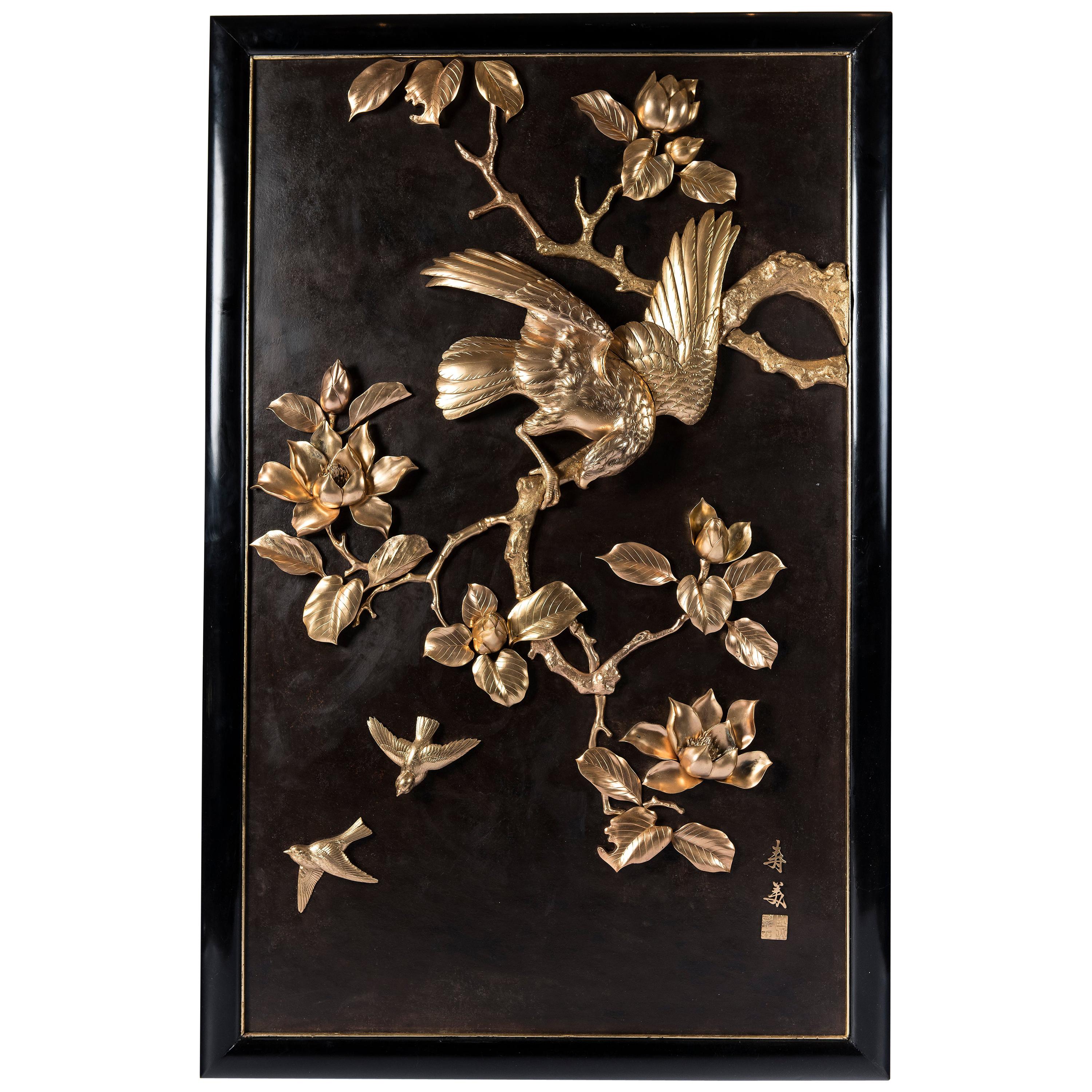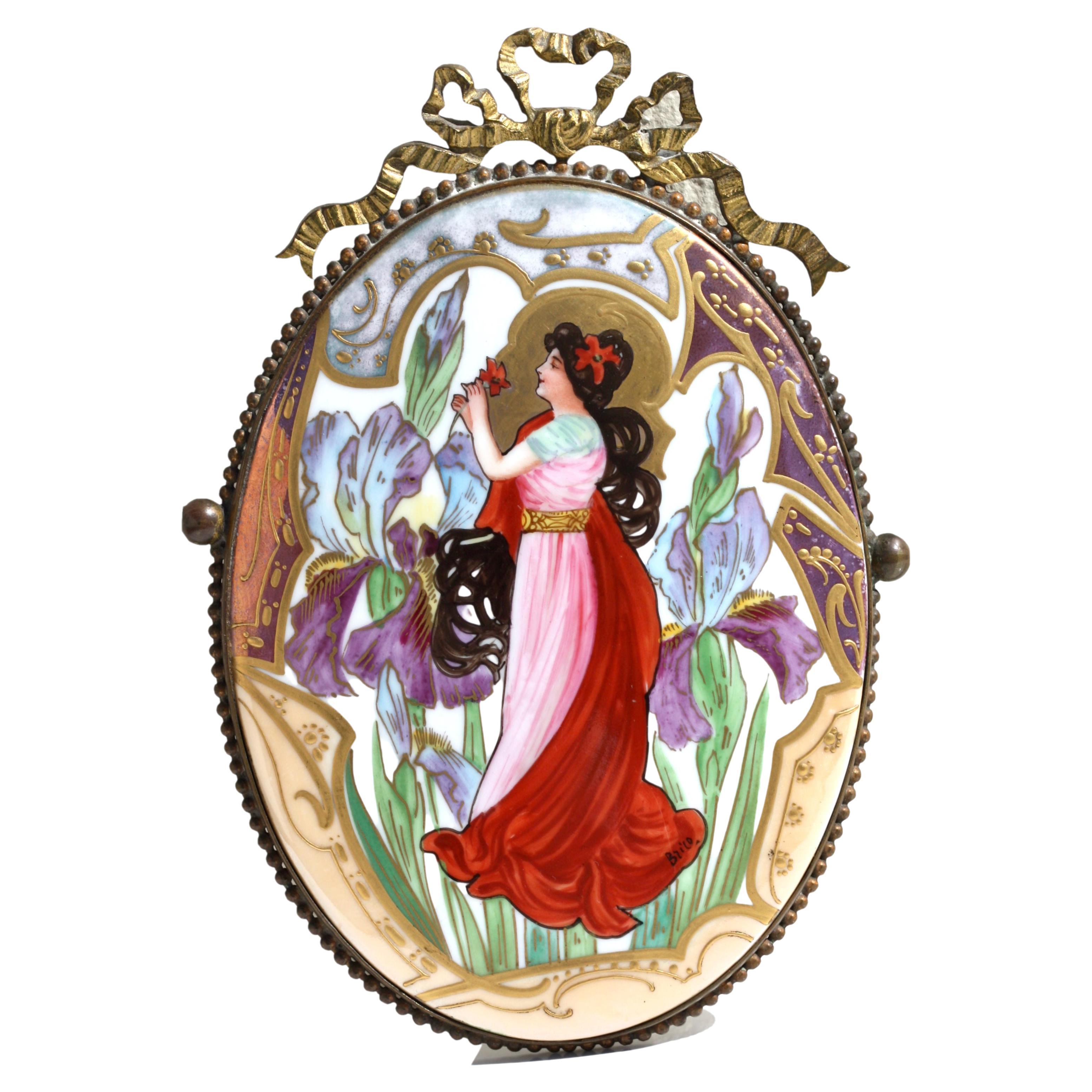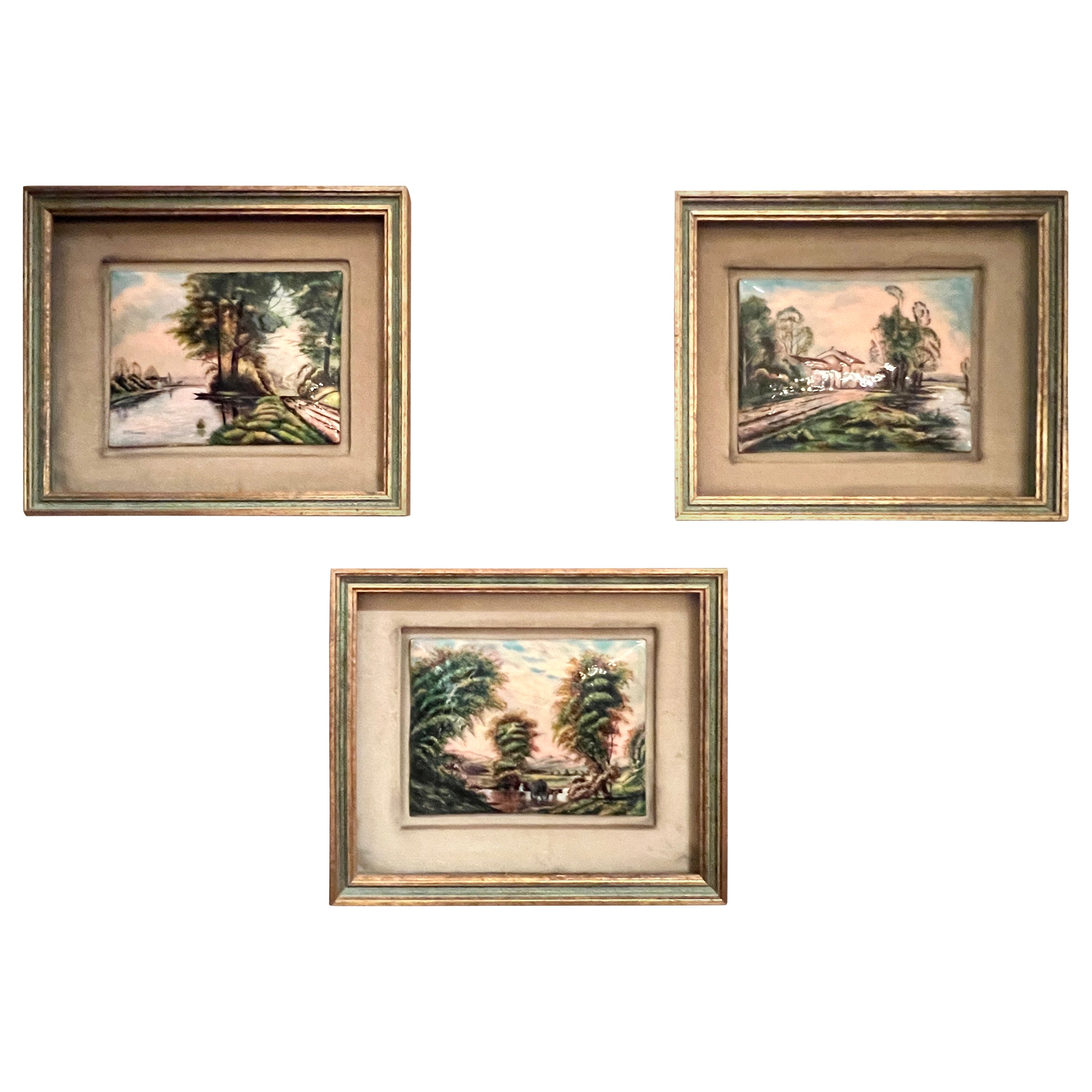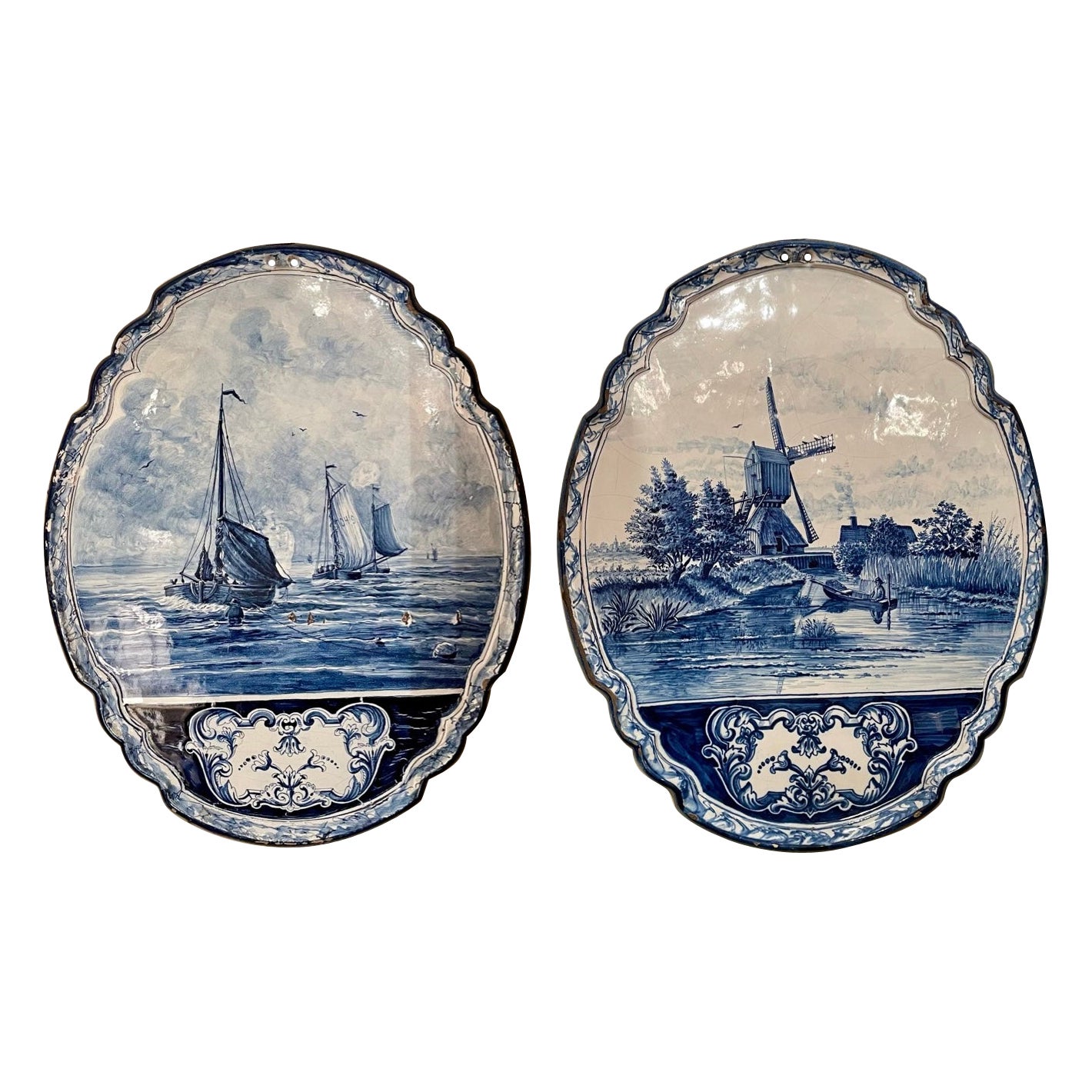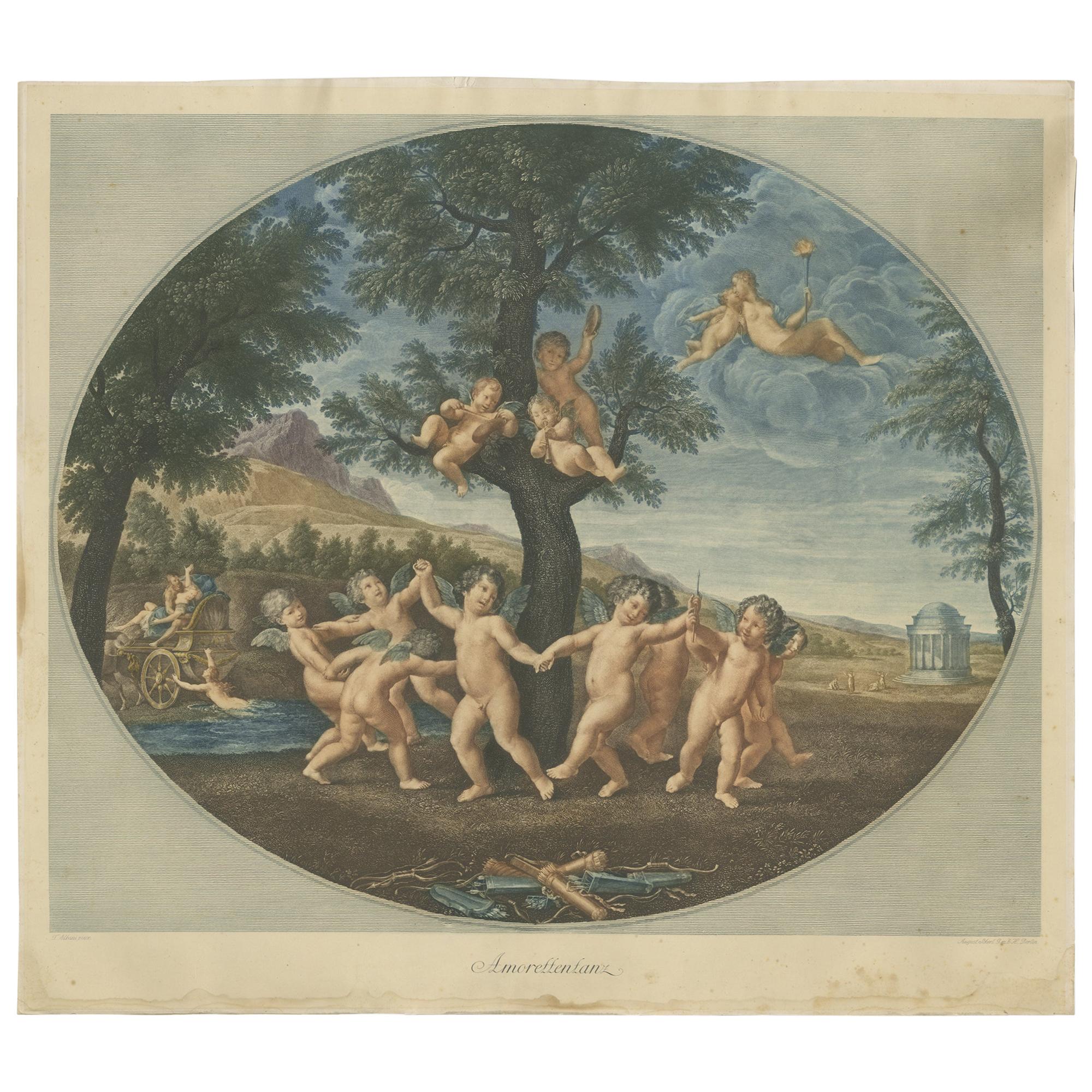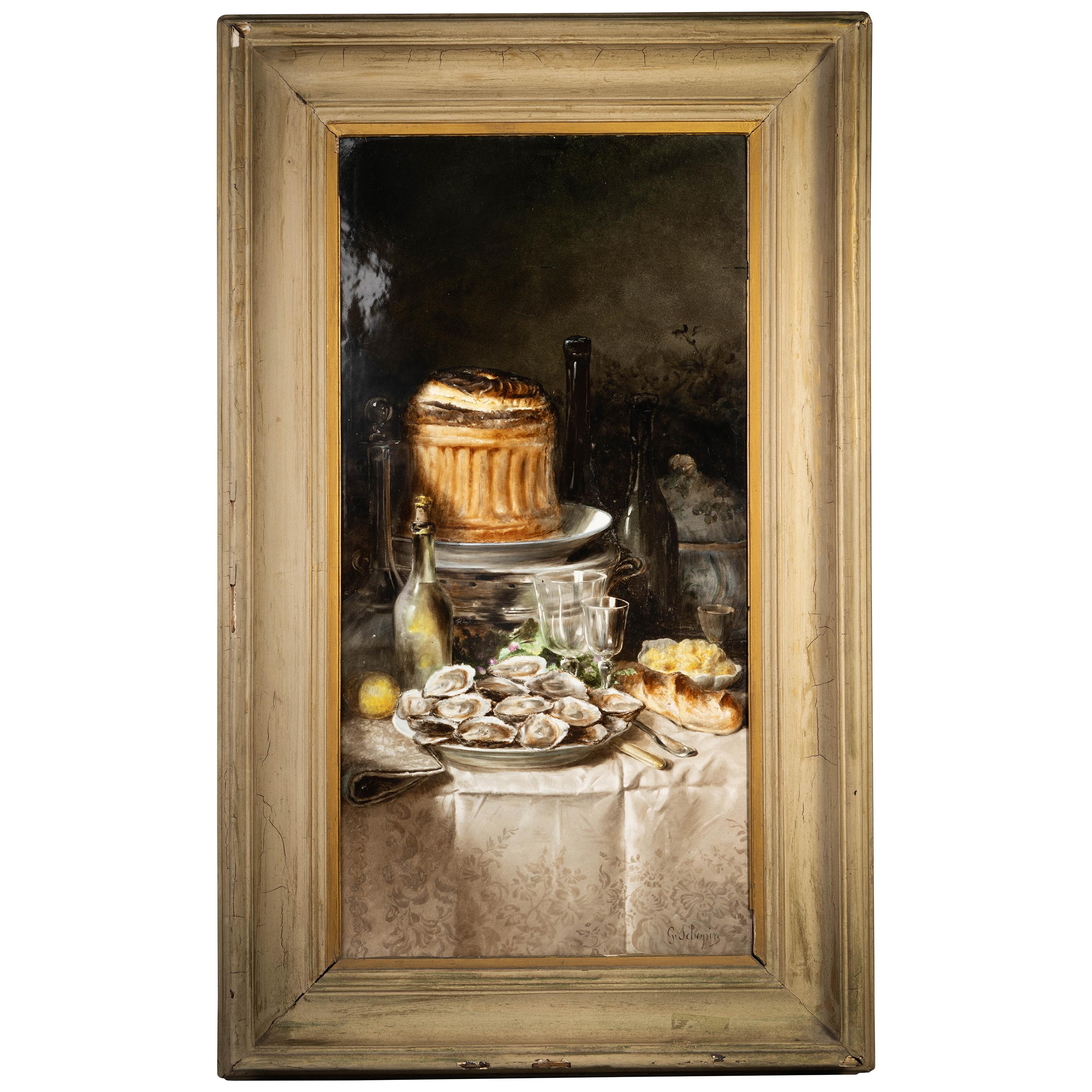Items Similar to "the Japanese and the Oriental" Plaques, Attri. to L. Hottot, France, circa 1900
Want more images or videos?
Request additional images or videos from the seller
1 of 10
"the Japanese and the Oriental" Plaques, Attri. to L. Hottot, France, circa 1900
About the Item
Important pair of metal with double patina plaques representing an Oriental woman and a Japanese woman, both dressed in traditional outfits, during the tea ceremony. Each is presented in a black and gold painted wooden frame.
Louis Hottot (1829-1905) is a French sculptor. In 1885, he participated for the first time in the prestigious Salon des Artistes Français and exhibited at the Salon every year until 1898. Oriental scenes and characters are his favorite subjects.
- Attributed to:Louis Hottot (Sculptor)
- Dimensions:Height: 67.33 in (171 cm)Width: 35.04 in (89 cm)Depth: 3.15 in (8 cm)
- Sold As:Set of 2
- Style:Japonisme (Of the Period)
- Materials and Techniques:
- Place of Origin:
- Period:1900-1909
- Date of Manufacture:circa 1900
- Condition:Wear consistent with age and use.
- Seller Location:PARIS, FR
- Reference Number:
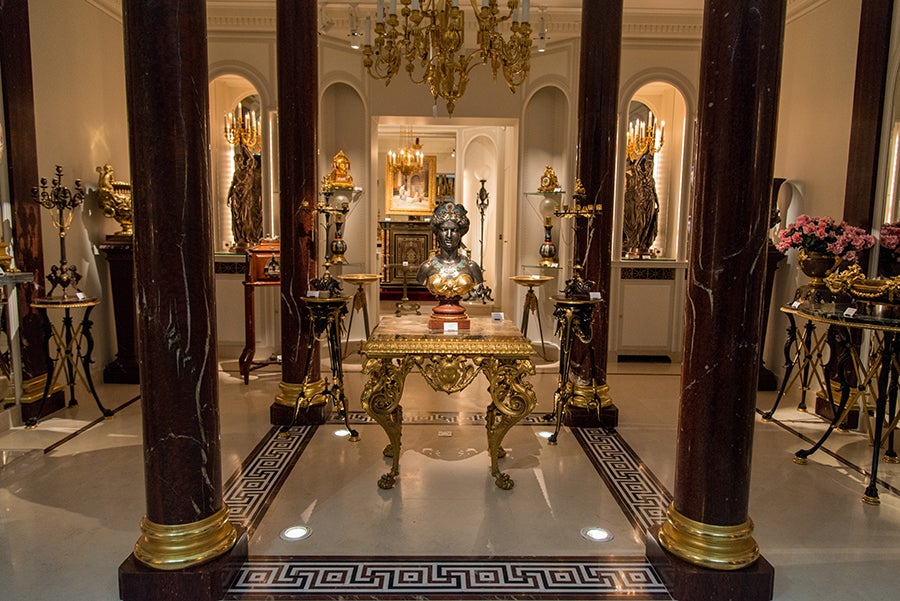
About the Seller
4.9
Vetted Seller
These experienced sellers undergo a comprehensive evaluation by our team of in-house experts.
Established in 1997
1stDibs seller since 2018
76 sales on 1stDibs
Typical response time: <1 hour
Associations
International Confederation of Art and Antique Dealers' Associations
- ShippingRetrieving quote...Ships From: PARIS, France
- Return PolicyA return for this item may be initiated within 7 days of delivery.
More From This SellerView All
- Japonisme Lamp Att. to E. Lièvre , Japan-France, Circa 1880By Ferdinand Barbedienne, Edouard LievreLocated in PARIS, FRHeight with lampshade : 133 cm (52,3 in.) / without lampshade : 125 cm (49,2 in.) ; Lampshade - Height 74 cm (29,1 in.) ; Diameter : 86 cm (33,8 in.) Important Japanese style gourd-shaped lamp, made with a polychrome Kutani porcelain vase decorated with lake scene and flowers in cartouches, in the middle of flying waders on a red background. It is covered with its original beige pleated silk lampshade, embroided with flowers and waders. It rests on an « old gold » patinated bronze base with stylized openwork decoration, topped with a Fô dog on each foot. Related work : Japanese enamel porcelain...Category
Antique 1880s French Japonisme Table Lamps
MaterialsBronze
- "The Donkey Race" Limoges Porcelain Dish, Signed F. Mérigot, France, Circa 1890Located in PARIS, FRCharming Limoges porcelain dish with scalloped edges representing a popular festival, a donkey race in a village in Bretagne, attended by families in traditional outfits. Maximil...Category
Antique 1890s French Decorative Art
MaterialsPorcelain
- Japanese Style Cabinet-Secretary Attributed to G. Viardot, France, Circa 1880By Gabriel ViardotLocated in PARIS, FRA Japanese style carved wood cabinet attributed to G. Viardot. A painted decor imitating Japanese lacquer, ornamented with flowers, birds and butterflies. Opening onto two drawers an...Category
Antique 1880s French Japonisme Cabinets
MaterialsWood, Paint
- Japanese Style Cabinet-Secretary Att. to Perret & Vibert, France, circa 1880By Perret et VibertLocated in PARIS, FRA Japanese style carved wood cabinet, with a painted decor imitating Japanese lacquer, ornamented with flowers, birds and butterflies. Opening onto two drawers and a paper filer, the upright-secretary door is also fitted with red velvet. Surmounted by a drawer and asymmetrical shelves, composed in the Japanese « zen » spirit, the cabinet stands on four legs joined by an engraved stretcher. The great influence of the Far-East, through China and Japan, in the second half of the 19th century French art could be found first in painting and soon after in decorative arts and furniture as well. Following the Franco-English military campaign led in 1860 against the Imperial army in China, the French troops of Napoleon III brought back from the Summer Palace, a part of the Chinese Imperial court treasure, which will make up the famous Chinese Museum of Empress Eugénie at the Fontainebleau Palace. The French artists won’t be long to take inspiration from those exotic and sumptuous objects for their creations, as they used to do in the 18th century, when the best French cabinet-makers adapted the Chinese lacquers on the luxurious royal chests. But the influence of Japan, at the Meiji period (1868-1912), came also very quickly to France, thanks to the opening of the country in the middle of the 19th century, as well as the development of traveling and the amazing Universal Exhibitions, in which Japan participated for the first time in 1867 in Paris. Then many Japanese objects and prints were imported to France and to all Europe, and for which some collectors spent already fortunes. With Manet and Impressionists generation, the passion for Japanese art, more than a simple taste for an exotic style, was still in fashion until the turn of the 19th century. It provoked not only a craze among the French aristocratic families as well as the wealthy Paris high society, wishing renew their mansion inner decoration, but turned also to a real revolutionary movement among the “avant-garde” artists. Those artists, whoever they were, painters, cabinet-makers or designers of ceramic, bronze and crystal objects, adapted then those techniques and naturalistic motifs unknown until this time. Christofle, very famous since 1867 as a silversmith, was also one of the leaders among the inventors of Japanism. He knew how to use Japanese elements to his own splendid works made in silver or “cloisonné” enameled bronze. During the 1878 Paris Universal Exhibition, Christofle presented with great success his life-sized bronze Japanese ladies torcheres, executed by the renowned sculptor Guillemin. Another famous company to be mentioned, is “L’Escalier de Cristal”, producing art objects and furniture, all of high standard quality and innovating much with their Japanese decor. Highly remarked during the Universal Exhibitions, “L’Escalier de Cristal” collaborated with the greatest artists, such Gallé and Rousseau for glass- and ceramic wares, and the cabinet-makers Lièvre and Viardot, whom made furniture including sometimes authentic Japanese elements. In 1872, Alfred Perret and Ernest Vibert opened in Paris, at 33 rue du Quatre-Septembre a store that offered “natural bamboo furniture and cane seats” and all kinds of textile fittings for furniture. This furniture used for winter gardens and terraces of mansions knew then a resounding success. They developed their business around 1884 with their Japanese style furniture, very close to that executed by Gabriel Viardot (1830-1906). In 1886, the company appearing in the category of “Chinoiserie and Japoneries” offered, in addition to furniture and seating creation, works of art and inlaid furniture directly imported from the Far East ; an activity that expanded rapidly. Their exotic fantasy furniture presented at the Universal Exhibition of Paris in 1889 and 1900, rewarded them two silver medals. In 1894, the company was listed under the name “Perret et Vibert”, headed by the son of Alfred Perret and Ernest Vibert. The same year, they redesigned their store on rue du Quatre-Septembre, creating ten new show-rooms, showing complete furniture sets of Japanese and Chinese style inspiration. It was not until 1895, that the company was finally named “La Maison des Bambous” and organized then in their shops an “exhibition of country furniture and seats for castles and villas”, which was visited by Empress Eugenie to furnish her villa Cyrnos at Cap Martin. She actually was a regular customer of the “Maison des Bambous” as she bought repeatedly furniture. In October of the same year, the king of Greece...Category
Antique 1880s French Japonisme Secretaires
MaterialsWood
- Oriental Style Crystal and Gilded Bronze Chandelier, France, circa 1900Located in PARIS, FRElegant Oriental style chandelier in pink tinted crystal and gilded bronze with six light arms, composed of an illuminating shaft formed by two superimposed cylinders, all decorated ...Category
Antique Early 1900s French Chandeliers and Pendants
MaterialsCrystal, Bronze
- Japanese Style Clock attr. to L'Escalier de Cristal, France, Circa 1885By L'Escalier de CristalLocated in PARIS, FRRare Japanese clock in double patina bronze with suspended dial. The portico and dial, with calligraphic Kanji numerals complemented by hands featuring an undulating dragon, are deco...Category
Antique 1880s French Japonisme Mantel Clocks
MaterialsBronze
You May Also Like
- Gilt and Patinated Bronze Plaque, Japan, circa 1900Located in Buenos Aires, Buenos AiresGilt and patinated bronze plaque. Japan, circa 1900.Category
Antique Early 1900s Japanese Meiji Decorative Art
MaterialsBronze
- Continental Porcelain Oval Plaque circa 1900Located in West Palm Beach, FLA Continental porcelain oval plaque circa 1900 painted with a beauty holding a rose after Nathaniel SICHEL (1843-1907), impressed C above 170, within a ...Category
Antique Early 1900s Paintings
MaterialsPorcelain
- Set of 3 Antique French Limoges Framed Enameled Porcelain Plaques, Circa 1900's.Located in New Orleans, LASet of 3 Signed Antique French Limoges Framed Enameled Porcelain Plaques, Circa 1900-1920.Category
Early 20th Century French Decorative Art
MaterialsPorcelain
- Pair Antique Dutch Blue & White Porcelain Plaques, Circa 1890-1900.Located in New Orleans, LAPair antique Dutch blue & white porcelain plaques, circa 1890-1900.Category
Antique Late 19th Century Dutch Decorative Art
MaterialsPorcelain
- Antique Mythological Print of Amoretti Dancing to the God Amor, circa 1900Located in Langweer, NLAntique print titled 'Amorettentanz'. Mythological print of amoretti dancing around a monument to the god Amor. They are celebrating the abduction ...Category
Early 20th Century Prints
MaterialsPaper
- Large French Porcelain Still Life Plaque, circa 1870Located in New York, NYImpressed mark of J. Loebnitz and retailers mark of Maison Pichenot.Category
Antique Early 1900s French Decorative Art
MaterialsPorcelain
Recently Viewed
View AllMore Ways To Browse
French Wood Plaque
Antique Japanese Wall Art
Black And Gold Oriental
Antique Black Paint For Metal
Antique Metal Plaque
Antique Metal Plaques
Antique Wooden Plaque
Antique Wooden Plaques
Japanese Wooden Wall
Oriental Dress
Black And Gold Oriental Furniture
Japanese Wooden Wall Art
Wooden Wall Plaques
Japanese Black Gold Metal
Pair Of Gold Framed French Art
Japanese Wall Pair
Oriental Wall Art
Japanese Wall Art Pair
